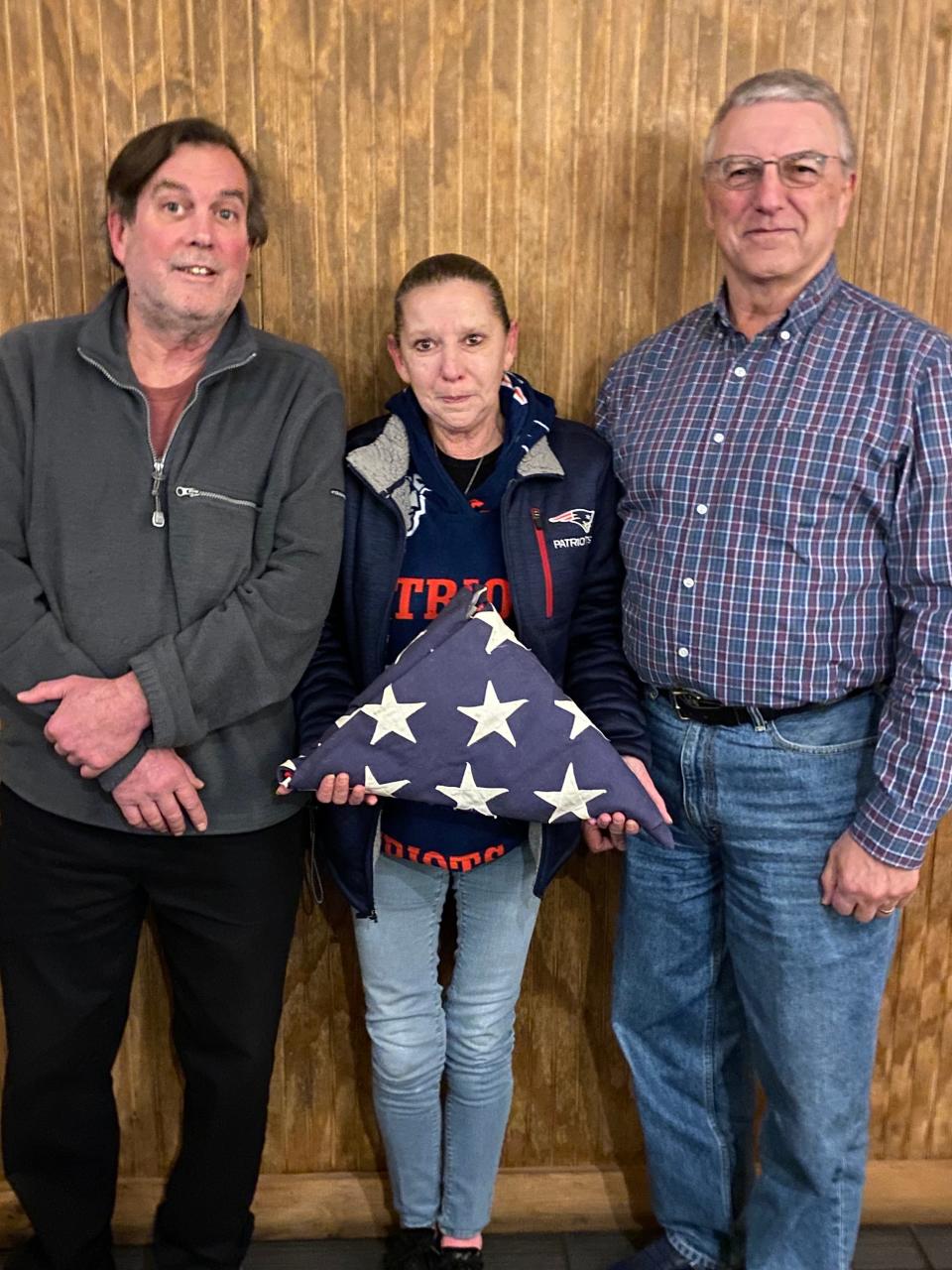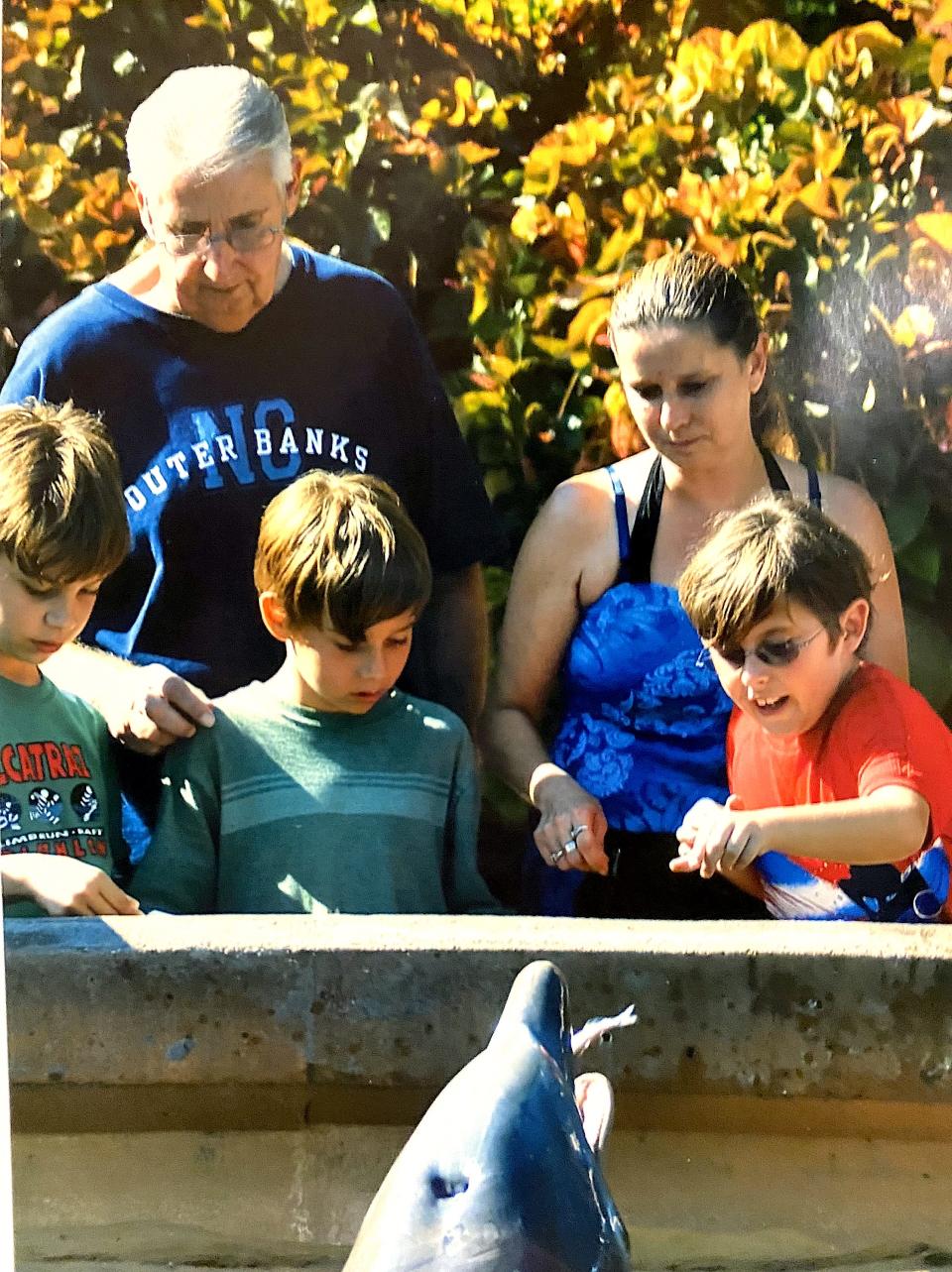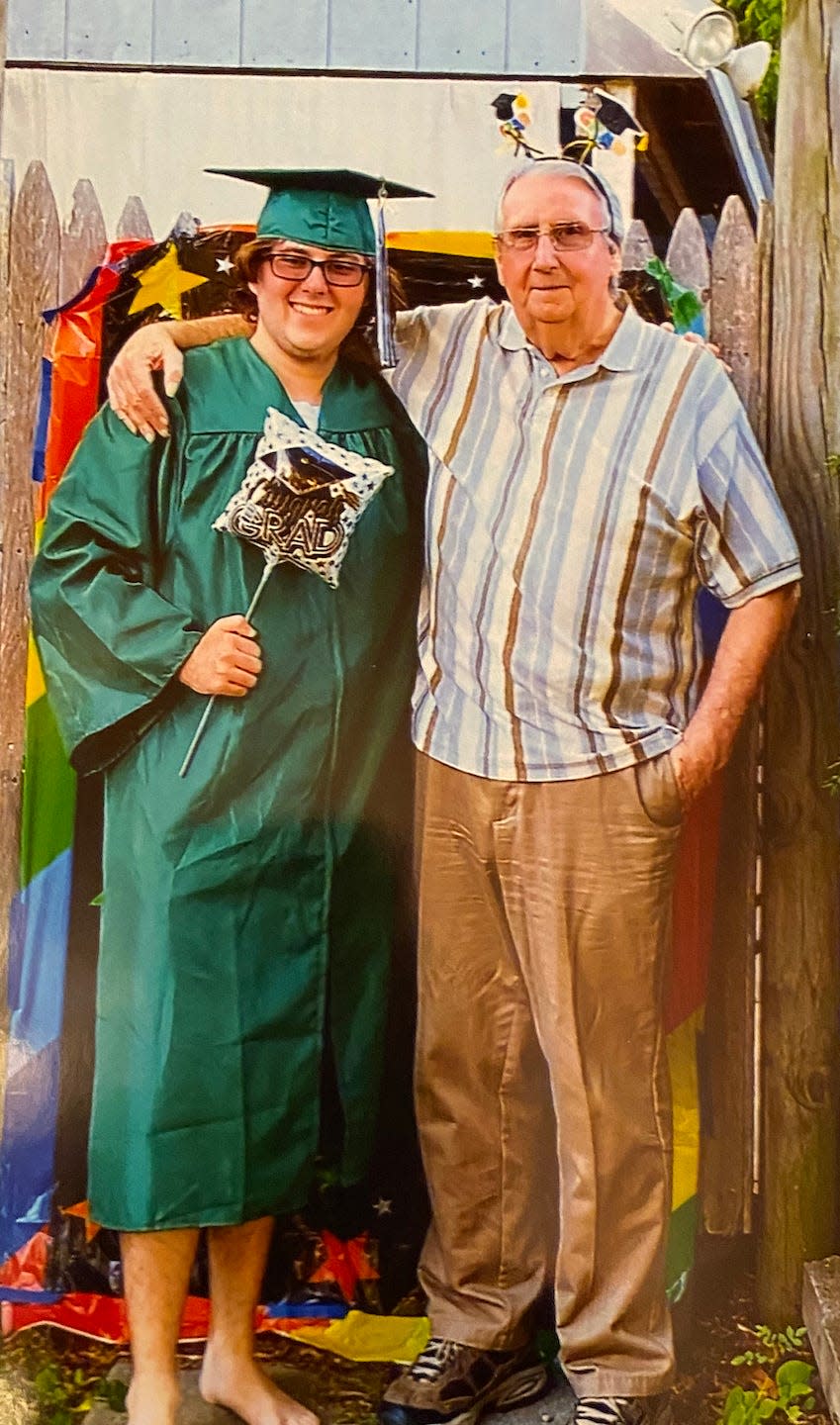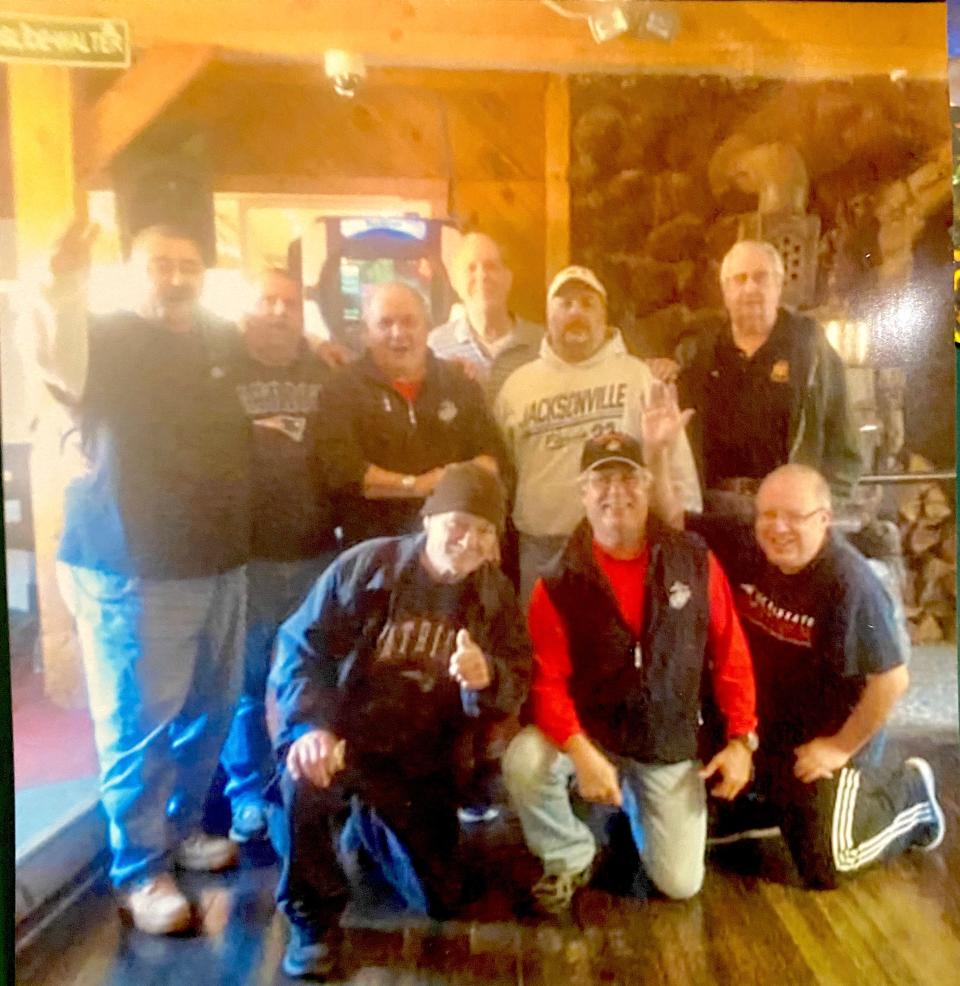How 'a perfect storm' of errors left veteran to be buried in pauper's grave
About 175 years ago, French novelist Honore de Balzac wrote, “I did not know that bureaucracy could send its claws into our very coffins.”
The spirit of retired Senior Master Sgt. Ken Lewis learned that lesson the hard way.
Last week, I told how Lewis, a veteran with some 40 years of military service, ended up in a pauper’s grave, mourned only by his gravediggers.
Lewis died Dec. 11, 2020. He was entitled to burial in the Veterans Cemetery, but it took more than three years of fighting bureaucratic inflexibility for his friends to make that happen. When they finally unraveled enough red tape to get his reburial approved, they had to raise more than $5,000 to cover the costs of someone else’s mistake.
A veteran's final odyssey: Why RI buried a career military man in a nameless grave
Developing this report
I learned of this situation on Jan. 5, when Rhode Island Adjutant General Christopher Callahan alerted local military and veteran communities to a GoFundMe campaign for the proper interment of Lewis.
More than two dozen people involved with this case were interviewed, including friends, neighbors, fellow veterans, his landlord and two funeral directors. Unsuccessful attempts to reach Ken’s estranged brother in Nevada were also made.
From this research, I conclude that mistakes were made by both Department of Health (medical examiner) and Department of Human Services (public assistance burial function). The funeral director who handled the initial burial was also in a position to save the day and did not.
Most of the missteps appear to have been errors of inaction. Along the way, any one of a half-dozen people may have prevented this debacle had they asked an extra question, made an extra call, or gone beyond their minimum job requirements.
What went wrong?
There was a blind insistence that only a blood relative could make funeral arrangements for a body in the custody of the state – even though waivers to this policy are possible.
Ken Lewis had an estranged brother in Nevada who wanted nothing to do with funeral arrangements, though multiple associates stepped forward to provide help. Lorie Daley and her husband, John Gallagher, offered to provide their friend with a proper burial. “I told the ME we would gladly handle the arrangements the way Ken wanted, which was to be cremated,” Lorie said.
DOH responded: “It is noted in the case file that [friends] of Mr. Lewis contacted the ME Office. However, there is no indication in the file that anyone offered to pay for his burial or cremation."
More importantly, no decision-maker made a serious effort to verify Lewis’ veteran status, despite multiple entreaties to do so.

There is a sister department in state government, aptly named the Office of Veterans Services. No one in DOH or DHS bothered to bring them into this inquiry.
Director Kasim Yarn said, "My office knew nothing about this case until it was too late.”
I asked him if there was a database authorities could access to determine whether or not someone served – and thus be entitled to a veteran’s burial.
“Yes,” he replied. “All we need is a Social Security number and a date of birth.”
The medical examiner had those two pieces of data. Why did no one heed the flashing lights that were saying, “Ken Lewis is a veteran”?
'A perfect storm'
Everyone involved agrees on three things:
1. This was a complex and unusual case. As one official said, “This was a perfect storm. Everything that could go wrong did go wrong.”
2. There are loopholes and inconsistencies in state policy concerning such matters.
Department of Health spokesman Joseph Wendelken acknowledged that all the state agencies involved are reviewing procedures in light of the Ken Lewis debacle "to ensure that no one gets missed and that all veterans are identified when they pass.”
Some of these steps have already been taken, he added.
3. We veterans need to take the necessary steps to make our final wishes known before we die. We should decide what our funeral arrangements should be!
Write them down and give them to a trusted family member or friend. None of us should end up like Ken Lewis.
More background about Ken
Lewis was born in Oakland, California, on Oct. 2, 1944. In the 1950s his family moved to Nevada, and Ken graduated from Reno High School in 1962. He attended the University of Nevada for one year, where he joined the Army ROTC program.
He joined the Nevada National Guard in March 1965, serving with the 152nd Tactical Air Wing as a finance specialist. About 1975, he answered a job posting for a position doing the same job in Rhode Island. He was hired as a Title 5 technician (civilian working for the National Guard).
Ken joined the R.I. Army Guard and served for the next 25 years, switching between the Army and Air Guard due to job openings and promotion opportunities.
After retiring from the military in 2002, Lewis dedicated another 15 years to public service before retiring completely in 2017.

After a failed marriage, Ken eventually moved into an Oakland Beach apartment in Warwick. The house was owned through an LLC by Jim Foley and his wife, Teri.
Ken’s hangout was the Bottom Line Bar, a cozy Warwick establishment about 3 miles from his home. There, he cultivated many friendships, especially Lorie Daley. She and Ken were the best of friends for more than 20 years.
Death and the first burial
On Dec. 10, 2020, Lorie became concerned when she could not reach Ken. She went to his house. “We looked in the windows. I could see Ken lying on the floor, so I called 911,” she said. Warwick Fire Department broke in and found him dead. Apparently, the Warwick Police Department identified the body from evidence at the scene.
No foul play was suspected, so Ken’s remains were placed in a locked body bag and transferred to the medical examiner.
This is where the question of who knew what and when about his veteran status begins to get fuzzy. Ken’s wallet, containing his driver’s license and retired military ID, was never found.
“Since we did not do an autopsy, we never unlocked the bag before giving the remains to the funeral home,” said Wendelken. “We have no idea if any of his belongings were with his body.”
Funeral director Tom Olson said he received no personal effects. If they had, Olson says he should have been able to determine that Lewis was a veteran, and the outcome would have been very different.
Landlords Jim and Teri were very helpful. Jim said Ken was “a great tenant and a really good guy.” Jim had also served in the Air Force, so they had something in common.
“I did some extra legwork out of respect for Ken,” Teri said. Her attorney located the relatives in Nevada. Teri was aghast when Ken’s brother Stephen declined to get involved. “All he wanted was Ken’s military stuff and his fishing gear.”
According to procedure, the medical examiner advertised for relatives in the newspaper. Receiving no response, they turned the case over to the Department of Human Services for a General Public Assistance burial. Ken was interred in an unnamed grave at St. Joseph Cemetery in West Greenwich.
Led by Kevin McDonnell, fellow veterans tried to follow Ken’s body through the system. McDonnell was well positioned for that task, having served as a Family Assistance Center coordinator for the Guard.
They were initially directed to Mount Pleasant Funeral Home – which is not where Lewis was sent. Another error that cost valuable time.
McDonnell finally tracked down Tom Olson, the funeral director hired by the state. Unfortunately, they’d found him two days after Ken had been buried. Olson was unaware Ken was a veteran.
Reburial
Ken’s friends organized an after-burial service at St. Kevin Church in Warwick.
Retired Lt. Col. Gerry Larence attended. Given his background in logistics, he thought he could help relocate Lewis to the Veterans Cemetery.
After the pandemic subsided, he began work in earnest.

For more than a year, he navigated the difficult process of exhumation. He enlisted the help of funeral director Mark Russell of Monahan Drabble Sherman. A longtime friend of veterans, Russell donated his services for the transfer.
Exhumation required the written approval of a relative – just as the original burial did. However, thanks to the dedication of Margaret Sousa at the Office of Catholic Cemeteries and Rita Graterol at DHS, that obstacle was overcome.
“I give Gerry a lot of credit,” said Sousa. “He stuck with this for months and saw the process through. Gerry went the extra mile, and he deserves the lion’s share of the credit.”
Larence was approved as a non-blood relative (a stand-in next of kin). He signed the paperwork, and on Jan. 12 the remains of Ken Lewis were exhumed for reinterment at the Veterans Cemetery.
This begs the question: Why could this waiver not have been employed at the time of the first burial?
It cost $300 to bury him, but thousands to exhume him
Catholic Cemeteries gave Larence an estimate of between $5,000 and $6,500 for exhumation.
Cemeteries receive $300 from the state to bury a public assistance body. One of Ken’s veteran friends commented, “So it cost $300 to bury him, and $5,000 to dig him up?”
Larence acknowledges he did not push back when told the price. “I was laser-focused on getting the task accomplished. I had been working on this for more than a year, and wasn’t going to risk everything by arguing about money at the last minute,” he said.

Instead, he launched an online GoFundMe campaign.
Despite coming three years after Ken’s death, it was oversubscribed in three days. That’s the heartwarming part of this tale of woe.
Changes in progress
Publicity has finally gotten the attention of the powers-that-be. Both Wendelken and James Beardsworth, spokesman for DHS, have confirmed that some procedures have already changed and others are in the works.
The Office of Veteran Services has finally been brought into the loop, and checking with them is now standard operating procedure.
Acknowledging the communication breakdown between DOH and DHS, new procedures mandate a formal record (not just phone calls and case notes) of all communications on public assistance burials.
Funeral directors have also received new guidance emphasizing the importance of determining possible military service before issuing a death certificate.
Too bad it took a media spotlight to get such changes in motion. DOH and DHS could have listened to the citizens who originally complained back in 2021.
I am still concerned there does not seem to be a single person in charge to ensure that bodies unclaimed by relatives, especially those of veterans, are properly handled. Wendelken says different entities play different roles in the process, so the effort must be collaborative.
Vets need to make their own arrangements
There is an important cautionary component linked to the Lewis story. The debacle might never have occurred had he preplanned his own arrangements.
“Veterans must take the first step,” said Kasim Yarn. “Preregister with the Veterans Cemetery if you wish to be buried there. The process will then be smooth when that day arrives.”
Wendelken agrees: “Clearly communicate your final wishes to your loved ones and/or trusted contacts. Survivors also need to know where to find military service documentation, including DD 214 (service history) forms.”
Epilogue
Retired U.S. Air Force Brig. Gen. Jim D’Agostino said, “Ken, an avid fisherman, was part of our group that went ice fishing at Great Pond, Maine.”
He wrote, “Ken was a dear colleague, a dedicated professional who served this country faithfully and proudly. May he now rest in peace with his fellow veterans.”
This article originally appeared on The Providence Journal: RI agencies working to ensure veterans given proper military burials

